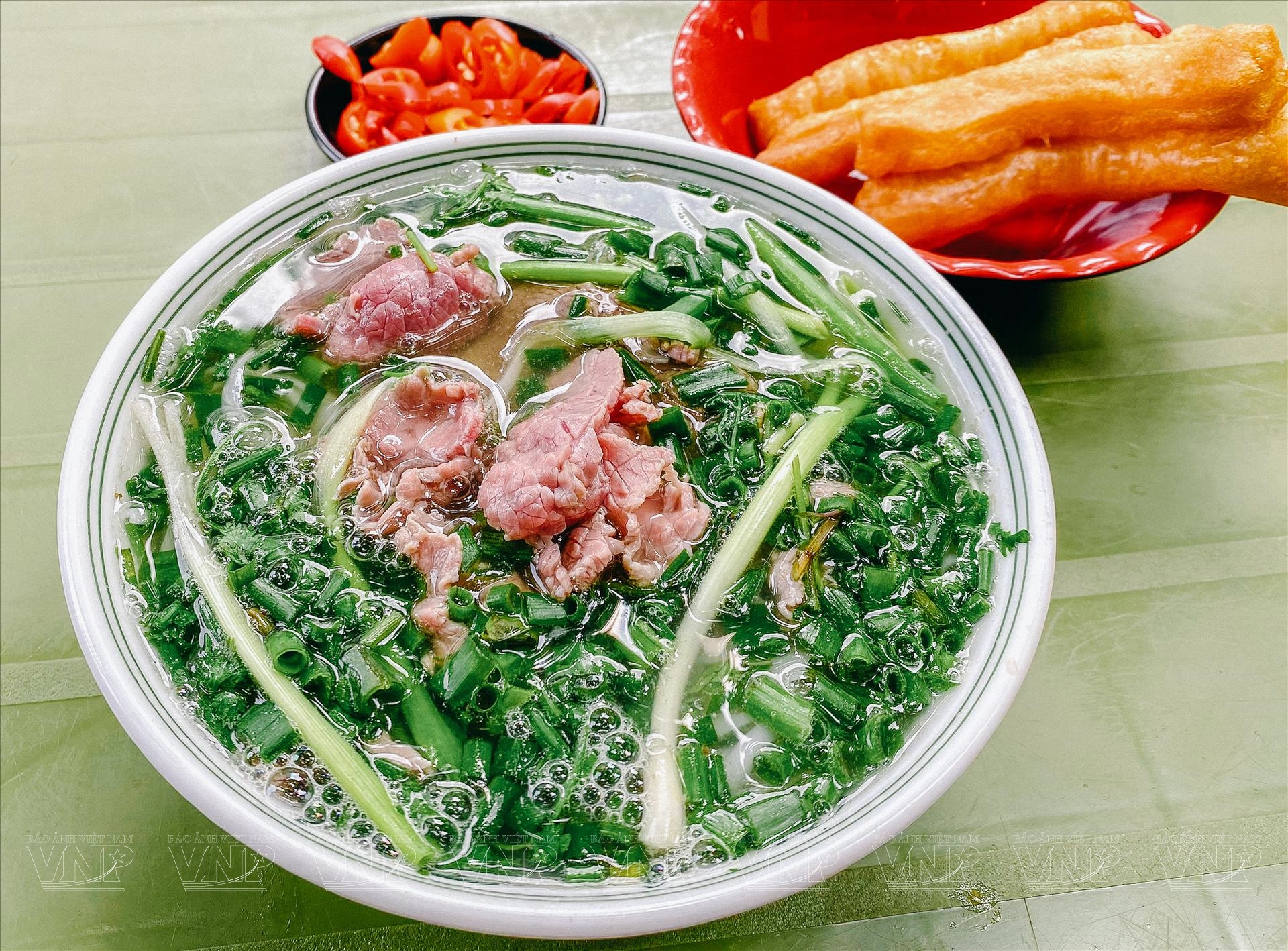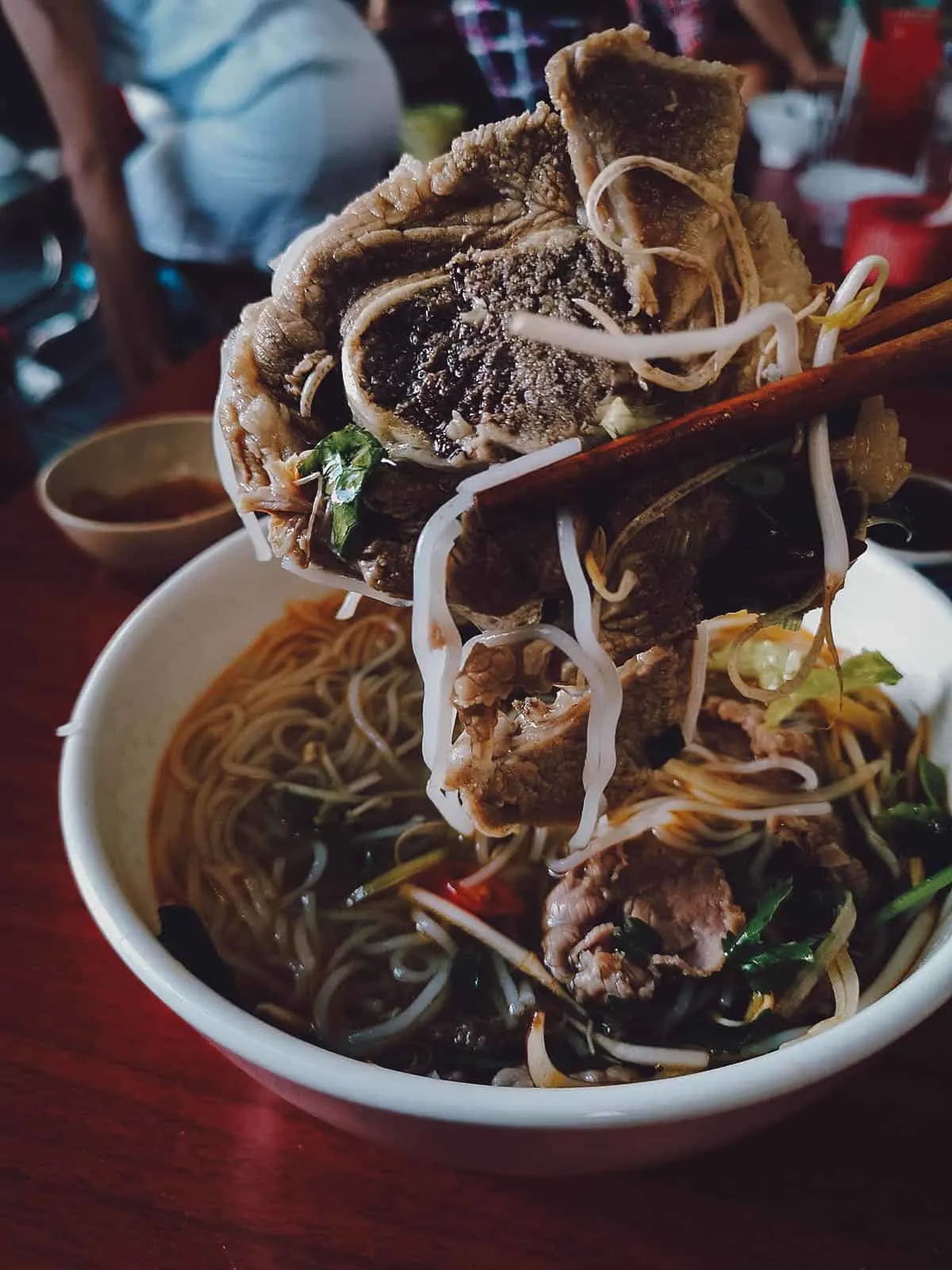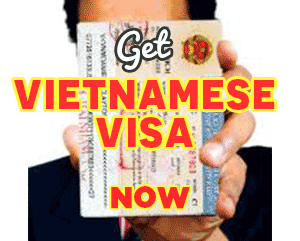Vietnam is a paradise for food lovers, and its street food scene is nothing short of legendary. From the bustling streets of Hanoi to the vibrant alleys of Ho Chi Minh City, every corner offers a tantalizing array of dishes that are as affordable as they are delicious. Street Food in Vietnam: Delicious and Affordable Dishes You Must Try is not just a tagline—it’s an invitation to explore the heart and soul of Vietnamese culture through its food. Whether you’re slurping a bowl of pho, biting into a crispy banh mi, or savoring the complex flavors of bun cha, each dish tells a story of tradition, innovation, and community.
Table of Contents
Introduction to Vietnam’s Vibrant Street Food Scene

Vietnam’s street food culture is a dynamic reflection of its history, geography, and people. Unlike formal dining, street food is an immersive experience—one that engages all the senses. The sizzle of a hot grill, the aroma of fresh herbs, and the sight of vendors expertly crafting dishes in mere seconds create an unforgettable culinary theater.
The Origins and Evolution of Vietnamese Street Food
Street food in Vietnam has deep roots, dating back centuries to a time when vendors roamed the streets selling simple, portable meals to laborers and travelers. Over time, these humble offerings evolved into a diverse culinary landscape, influenced by Chinese, French, and Southeast Asian flavors. The French colonization introduced baguettes, which eventually gave birth to the iconic banh mi, while Chinese traders brought noodle-making techniques that shaped dishes like pho and mi quang.
Today, street food remains a cornerstone of Vietnamese daily life. It’s a testament to resilience and adaptability, as vendors continue to innovate while preserving traditional recipes. From the northern highlands to the Mekong Delta, regional variations highlight the country’s agricultural abundance and cultural diversity.
Why Street Food is the Best Way to Experience Vietnam
For travelers, street food offers more than just a meal—it’s a gateway to understanding Vietnamese society. Unlike restaurants, street stalls are communal spaces where locals gather to eat, chat, and unwind. Sitting on a plastic stool, sharing a table with strangers, and watching the rhythmic motions of a vendor at work provide an authentic glimpse into everyday life.
Moreover, street food is a budget-friendly way to sample a wide variety of dishes. For less than a dollar, you can enjoy a bowl of steaming pho or a crispy banh xeo. This accessibility makes it easy to explore Vietnam’s culinary richness without breaking the bank.
The Role of Fresh Ingredients in Vietnamese Street Food
One of the hallmarks of Vietnamese street food is its emphasis on freshness. Vendors source ingredients daily from local markets, ensuring that herbs are vibrant, meats are tender, and vegetables are crisp. Dishes like goi cuon (fresh spring rolls) and bun cha rely heavily on the quality of their components, with herbs like mint, cilantro, and perilla leaves adding layers of flavor.
This commitment to freshness isn’t just about taste—it’s a cultural value. Vietnamese cuisine prioritizes balance and harmony, with each dish combining textures, temperatures, and flavors. Whether it’s the crunch of a fried spring roll or the silky smoothness of a rice noodle, every bite is a carefully crafted experience.
Must-Try Vietnamese Street Foods: A Culinary Adventure

Vietnam’s street food repertoire is vast, but a few dishes stand out as must-tries for any visitor. These iconic foods capture the essence of Vietnamese flavors and are widely available across the country.
Pho: The Soul of Vietnamese Cuisine
No discussion of Vietnamese street food is complete without mentioning pho. This fragrant noodle soup is a national treasure, with regional variations that reflect local tastes. In the north, pho bac is characterized by a clear, delicate broth and wider noodles, while southern pho (pho nam) is sweeter and more aromatic, often garnished with bean sprouts and basil.
What makes pho special is its versatility. It’s a breakfast staple, a late-night comfort food, and everything in between. The broth, simmered for hours with beef bones, cinnamon, and star anise, is the foundation of the dish. Toppings like thinly sliced beef, meatballs, or tendon add richness, while fresh herbs and lime provide brightness.
Banh Mi: A French-Vietnamese Fusion Masterpiece
The banh mi is a perfect example of Vietnam’s culinary ingenuity. This sandwich, born from French colonial influence, features a crispy baguette filled with pate, cold cuts, pickled vegetables, and chili sauce. Each region puts its own spin on the dish—some versions include grilled pork or fried eggs, while others opt for sardines or tofu for a vegetarian twist.
What sets banh mi apart is its contrast of textures and flavors. The crusty bread gives way to a soft interior, while the tangy pickles cut through the richness of the pate. It’s a portable, satisfying meal that costs just a few thousand dong, making it a favorite among locals and tourists alike.
Bun Cha: Hanoi’s Grilled Pork Delight
Made famous by Anthony Bourdain and Barack Obama’s 2016 meal in Hanoi, bun cha is a northern specialty that’s as flavorful as it is simple. The dish consists of grilled pork patties and slices of pork belly served in a sweet-and-sour broth with rice noodles and fresh herbs.
The magic of bun cha lies in its interactive nature. Diners dip the noodles and herbs into the broth, customizing each bite to their liking. The smoky char of the pork, the freshness of the herbs, and the tangy broth create a symphony of flavors that’s uniquely Vietnamese.
Banh Xeo: Vietnam’s Crispy Pancake
Banh xeo, or “sizzling pancake,” is a crispy, golden crepe made from rice flour and turmeric. Stuffed with shrimp, pork, and bean sprouts, it’s a textural delight—crunchy on the outside, soft and savory on the inside. The dish is typically served with lettuce leaves and herbs, which are used to wrap pieces of the pancake before dipping into nuoc cham (fish sauce).
Originating from central Vietnam, banh xeo has spread across the country, with each region adding its own twist. In the south, the pancakes are larger and filled with coconut milk for extra richness, while northern versions are smaller and crispier.
Banh Mi: The Iconic Vietnamese Sandwich and its Variations

The banh mi is more than just a sandwich—it’s a cultural icon. Its history, versatility, and universal appeal make it a cornerstone of Vietnamese street food.
The History of Banh Mi: From Colonial Roots to Global Fame
The banh mi’s origins can be traced back to the French introduction of baguettes to Vietnam in the 19th century. Locals adapted the bread, making it lighter and crispier by using rice flour alongside wheat. Over time, the sandwich evolved to include Vietnamese ingredients like pate, cilantro, and pickled vegetables, creating a unique fusion of flavors.
Today, banh mi is enjoyed worldwide, but the best versions are still found on the streets of Vietnam. From classic combinations to creative modern twists, the sandwich continues to evolve while staying true to its roots.
Regional Variations of Banh Mi
While the basic components of banh mi remain the same, regional differences add exciting diversity. In Hanoi, banh mi often features a simpler filling of pate and cold cuts, while Saigon’s versions are more elaborate, with additions like grilled pork or fried eggs. In coastal cities like Da Nang, seafood banh mi—filled with grilled squid or fish—is a popular choice.
Vegetarian banh mi is also widely available, showcasing Vietnam’s adaptability. Tofu, mushrooms, and mock meats are common fillings, paired with the usual herbs and pickles for a satisfying meat-free option.
How to Spot the Best Banh Mi Stall
Not all banh mi are created equal. The best stalls often have a few things in common: a steady stream of locals, freshly baked bread, and a generous hand with fillings. Look for vendors who make their own pate or pickles, as these small touches elevate the sandwich from good to extraordinary.
A great banh mi should balance flavors and textures perfectly—the bread should be crispy but not hard, the fillings should be plentiful but not overwhelming, and the sauce should add a tangy kick without drowning the other ingredients.
Pho: Exploring the Regional Differences of Vietnam’s Famous Noodle Soup
Pho is Vietnam’s most famous dish, but its preparation and flavors vary significantly from north to south. Understanding these differences adds depth to the pho experience.
Pho Bac vs. Pho Nam: A Tale of Two Broths
Pho bac, the northern version, is all about simplicity. The broth is clear and light, seasoned sparingly with ginger and fish sauce. Wide, flat noodles dominate the bowl, and toppings are minimal—usually just sliced beef and green onions. This style reflects Hanoi’s preference for subtle, refined flavors.
In contrast, pho nam from the south is bolder and sweeter. The broth is darker, infused with spices like star anise and cinnamon, and served with a mountain of fresh herbs, bean sprouts, and lime. Southerners also enjoy a wider variety of toppings, including meatballs, tendon, and tripe.
The Art of Pho Broth
The secret to great pho lies in its broth, which can take up to 12 hours to prepare. Beef bones are simmered with charred onions, ginger, and a blend of spices to create a rich, aromatic base. Skimming the broth constantly ensures clarity, while slow cooking extracts maximum flavor.
Some pho masters guard their recipes closely, passing them down through generations. The result is a broth that’s deeply flavorful yet clean, with a balance of sweetness, saltiness, and umami.
Where to Find the Best Pho in Vietnam
While pho is available everywhere, a few places are renowned for their exceptional versions. In Hanoi, Pho Thin and Pho Gia Truyen are institutions, serving robust bowls with tender beef. In Ho Chi Minh City, Pho Le and Pho Hoa are favorites, offering southern-style pho with all the trimmings.
For a unique twist, try pho ga (chicken pho) or pho chay (vegetarian pho), which showcase the dish’s adaptability. No matter where you go, a steaming bowl of pho is the ultimate comfort food.
Beyond Pho and Banh Mi: Discovering Hidden Street Food Gems
While pho and banh mi dominate the spotlight, Vietnam’s street food scene has countless lesser-known delights waiting to be discovered.
Bun Bo Hue: The Spicy Heart of Central Vietnam
This fiery noodle soup from Hue is a must for adventurous eaters. Bun bo hue features thick rice noodles, tender beef, and pork knuckle in a lemongrass-infused broth, with a kick of chili oil and shrimp paste. It’s a hearty, complex dish that reflects Hue’s imperial culinary heritage.
Cao Lau: Hoi An’s Mysterious Noodle Dish
Cao lau is a Hoi An specialty shrouded in mystery. The noodles, made with water from a specific ancient well, have a unique chewiness. Topped with roasted pork, crispy croutons, and fresh greens, the dish is a testament to Hoi An’s history as a trading port.
Che: Vietnam’s Sweet Treats
Che refers to a variety of Vietnamese desserts, often sold by street vendors. These sweet soups, puddings, and drinks feature ingredients like mung beans, coconut milk, and tropical fruits. Che ba mau (three-color dessert) is a popular choice, with layers of red bean, green jelly, and coconut cream.
Where to Find the Best Street Food in Vietnam: City Guides
Each Vietnamese city has its own street food specialties. Here’s where to find the best bites.
Hanoi: The Capital of Street Food
Hanoi’s Old Quarter is a street food paradise. Must-try spots include:
- Bun Cha Huong Lien (the Obama-Bourdain fame)
- Banh Cuon Ba Hoanh for steamed rice rolls
- Xoi Yen for sticky rice with toppings
Ho Chi Minh City: A Melting Pot of Flavors
From Ben Thanh Market to District 4’s seafood alleys, Saigon offers endless options. Don’t miss:
- Banh Mi Huynh Hoa for legendary sandwiches
- Com Tam Ba Ghien for broken rice with grilled pork
- Oc Dao for seafood snails
Hoi An: A Food Lover’s Dream
This charming town is famous for:
- Cao Lau at Trung Bac Restaurant
- White Rose Dumplings (banh bao vac)
- Mi Quang at Mi Quang Ba Mua
Budget-Friendly Eating: Enjoying Delicious and Affordable Street Food
One of the best things about Vietnamese street food is its affordability. Most dishes cost between $1-$3, making it easy to sample a wide variety.
How to Eat Like a Local Without Overspending
- Follow the crowds: Busy stalls usually indicate good food and fair prices.
- Learn basic Vietnamese phrases to avoid tourist markups.
- Opt for communal seating to save money and meet locals.
Street Food vs. Restaurants: What’s the Better Value?
While restaurants offer comfort and consistency, street food provides unbeatable value and authenticity. For the best experience, mix both—try street food for quick meals and save restaurants for special occasions.
Street Food Safety in Vietnam: Tips for a Healthy Culinary Experience
Eating street food in Vietnam is generally safe, but a few precautions can help avoid stomach issues.
How to Choose a Safe Street Food Vendor
- Look for stalls with high turnover (fresh ingredients).
- Avoid raw or undercooked meats if you’re sensitive.
- Stick to bottled water and avoid ice from questionable sources.
Common Street Food Pitfalls and How to Avoid Them
- Overeating: Portions can be deceptively filling.
- Spice overload: Ask for “khong cay” (no spice) if you’re sensitive.
- Hygiene: Carry hand sanitizer and watch how vendors handle food.
The Cultural Significance of Street Food in Vietnamese Society
Street food is more than just sustenance—it’s a social glue that brings people together.
Street Food as a Community Hub
From early-morning pho stalls to late-night snail vendors, street food is a constant in Vietnamese life. It’s where friends meet, families bond, and strangers become friends over shared meals.
The Role of Street Vendors in Preserving Tradition
Many street food recipes are family secrets, passed down through generations. Vendors take pride in their craft, often waking before dawn to prepare dishes from scratch.
A Foodie’s Guide to Ordering and Enjoying Street Food in Vietnam
Navigating Vietnam’s street food scene can be overwhelming, but these tips will help you dive in with confidence.
Essential Vietnamese Phrases for Ordering Food
- “Mot phan, lam on” (One portion, please).
- “Bao nhieu tien?” (How much?).
- “Ngon qua!” (So delicious!).
Street Food Etiquette: Do’s and Don’ts
- Do try everything.
- Don’t be afraid to ask for help.
- Do respect the vendor’s space and pace.
Conclusion
Vietnam’s street food is a vibrant, delicious, and affordable way to experience the country’s culture. From the iconic pho and banh mi to lesser-known gems like bun bo hue and cao lau, every dish tells a story. By embracing the chaos and charm of street food, you’ll not only satisfy your taste buds but also connect with the heart of Vietnam. So grab a plastic stool, dig in, and let the flavors of Street Food in Vietnam: Delicious and Affordable Dishes You Must Try guide your culinary adventure.
`



Leave a Reply